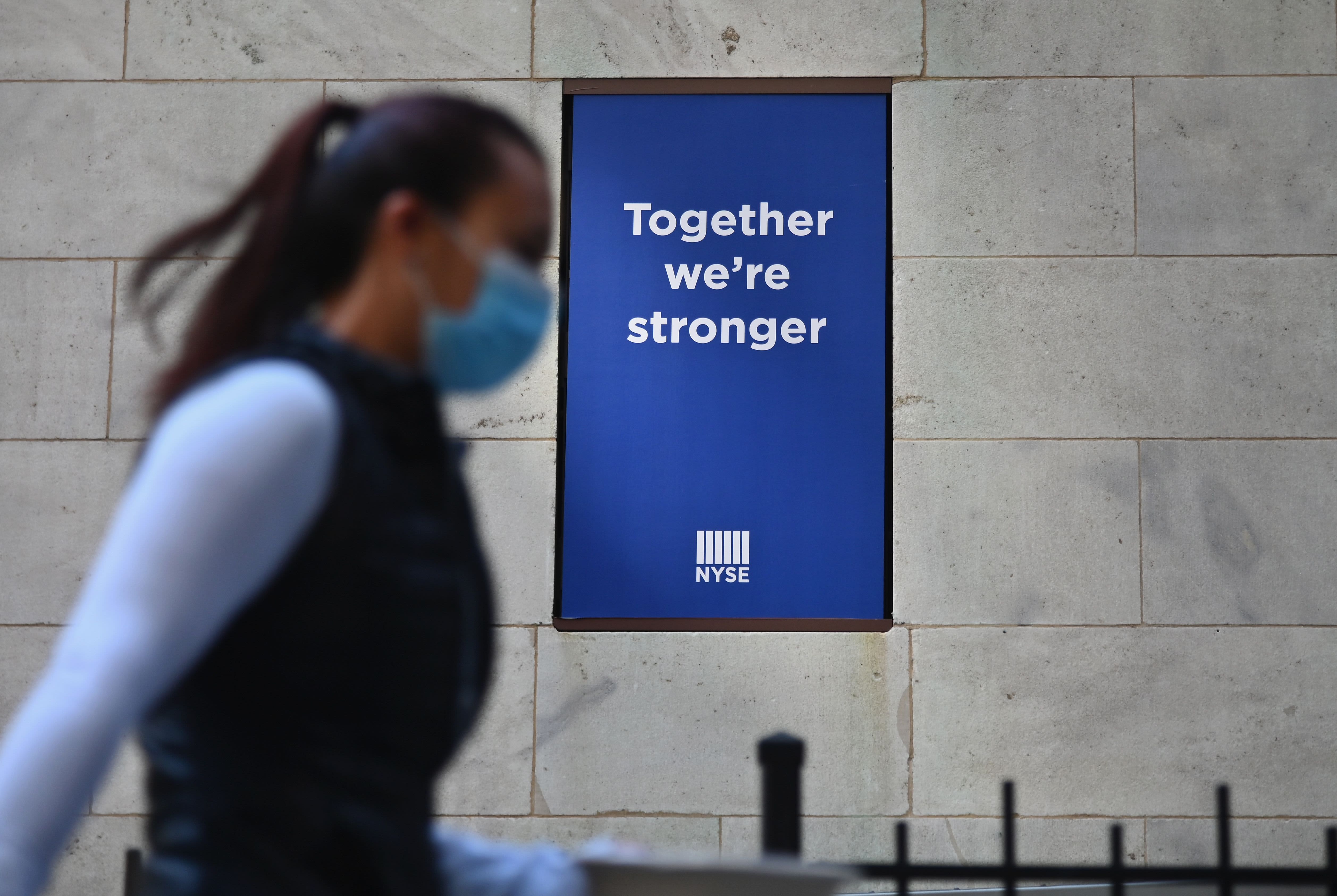
People walk by the New York Stock Exchange (NYSE) in lower Manhattan on October 5, 2020 in New York City.
Angela Weiss | AFP | Getty Images
Stock market bulls, rejoice. Third quarter earnings season begins Tuesday with JPMorgan Chase.
The good news: in the second quarter, companies delivered surprisingly large earnings beats as analysts underestimated the strength of the recovery. That is happening again.
The bad news: fourth quarter earnings — which is the quarter now on the minds of traders — remains hostage to the vaccine and reopening story, and to a lesser extent to the election.
Third quarter estimates rising, an unusual development
In most quarters, estimates for the quarter start out high, and then are adjusted downward — typically by 3% to 5% — as the quarter ends because analysts are too optimistic.
Not in the third quarter. Analysts started out assuming that the S&P 500 would see an earnings decline of 25% compared to the same period last year. But that was the bottom, and the estimates have been steadily improving since:
S&P 500 Q3 earnings: improving
- July 1: down 25.0%
- September 1: down 22.4%
- Today: down 21.0%
(Source: Refinitiv)
Still, it's a pretty bad number. If the decline comes in at down 21%, "[I]t will mark the second largest year-over-year decline in earnings reported by the index since Q2 2009," according to John Butters, who tracks earnings for Factset.
Early reporters are killing it
Another encouraging sign: of the 22 S&P 500 companies that already reported, 20 beat estimates, a much higher beat rate than usual. And they are beating by a very wide margin of 25%, according to Nick Raich, who tracks corporate earnings at Earnings Scout.
That is way above historical averages. Typically, companies will beat by 3% to 5%. This implies, Raich said, than analysts are again underestimating the extent of the recovery.
"Analysts have not had the benefit of corporate guidance, and without that guidance they assumed the worst, and the worst has not come," Raich told me.
Most importantly, the majority of the companies that have reported are seeing their fourth quarter earnings estimates raised by analysts, a sign that it is not a one-quarter fluke. Early reporters like Darden, FedEx, CarMax, Lennar, AutoZone, and Nike saw their fourth quarter estimates raised due to either commentary or their strong third quarter performance.
Guidance is still light, but commentary is more positive
In the second quarter, the markets cratered when corporate America decided that the economy was so bad they would, for the most part, stop providing guidance. Wall Street freaked out.
There is still a problem providing longer-term guidance for many companies. More than 25% of the companies in the S&P 500 are still not providing any earnings guidance for 2020 or 2021, according to Factset.
However, some companies are starting to loosen up on near-term quarterly guidance.
"[I]t does appear that some S&P 500 companies have better visibility on future earnings heading into the third quarter earnings season than they did heading into the second quarter earnings season," Factset's Butters said in a recent note to clients.
You can see that for the third quarter. While the number issuing guidance was still below normal, more companies issue positive guidance than negative guidance. That is the opposite of what usually happens. Of 69 companies that gave guidance, 46 were positive, 23 were negative.
So what does this mean for markets in the fourth quarter? Unfortunately, for veteran trader Art Cashin from UBS, while the good earnings news remains a tailwind, the market remains hostage to Covid headlines.
"Earnings will be important but not a dominant factor, because any news on the virus and any sudden change on reopening or the economy is what is really going to move the markets," he told me. "This is not a normal earnings season."